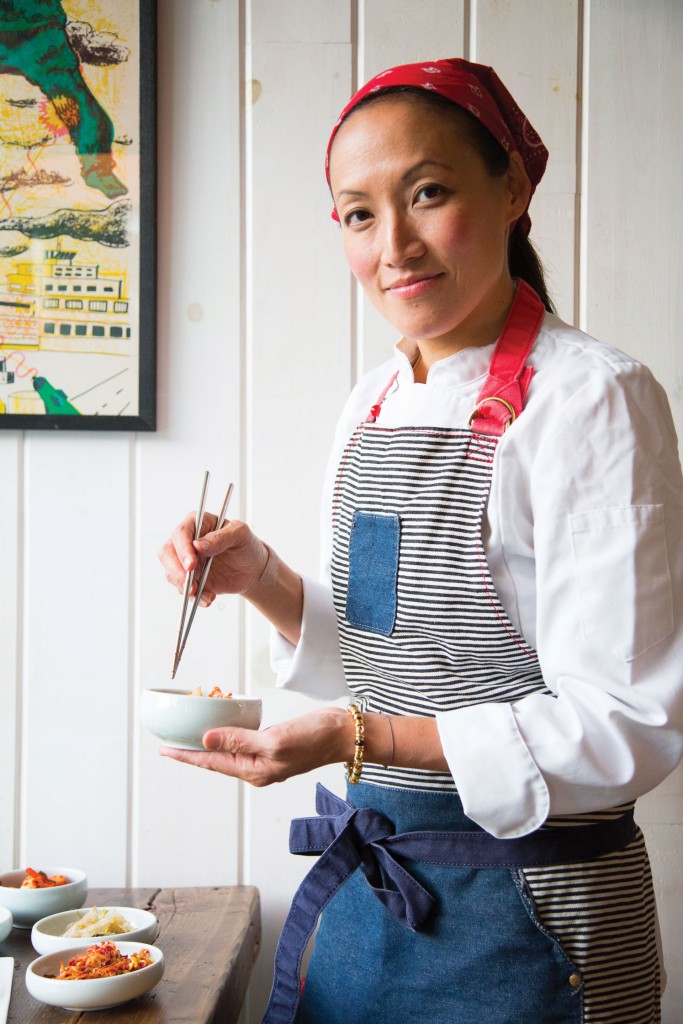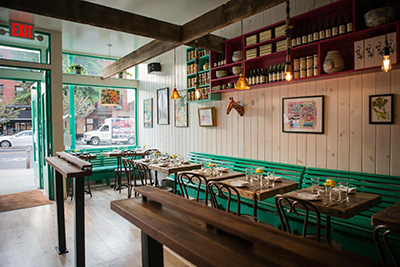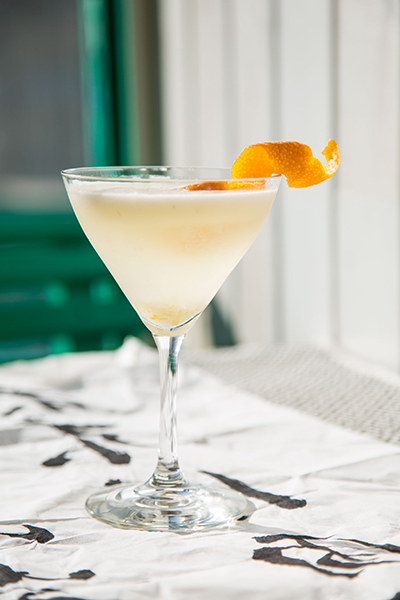Korean Restaurants Heat Up Brooklyn Dining Scene
A bright pink and turquoise scheme brings a welcoming, even kid-friendly vibe at White Tiger on Vanderbilt in Prospect Heights. In the kitchen, chefs create fresh versions of the Korean food Chef Liz Kwon grew up with.
Bartenders pour glasses of soju and sake and mix creative cocktails like the Citrus Moon, with sugar-washed moonshine, rice wine, chamomile, yuzu-honey, and lime. Kwon will deliver you large portions of piping hot food herself, like savory anchovy-fried rice topped with a runny egg and spicy, chewy pan-fried ricecakes. The spices will thaw you out but won’t knock you down. The menu isn’t exactly ‘fusion,’ though, Kwon explains.

“It’s Korean flavors that I’ve just riffed off of some other things,” she said. “It’s still very rooted in Korean traditions and Korean flavors, the same way New American takes influences from other places but [is] still American food. It’s influenced by flavors from other places in the world that I’ve traveled to or eaten in New York.”
Before this year, your best bet for Korean food in New York City was Flushing, Queens or one block of Korean bites on 32nd Street in Midtown. You could hit one of chicken master David Chang’s top-notch spots or relax at places like Fat Buddha Bar with their kimchi back (whiskey shot and kimchee juice) and Oiji, which Pete Wells praised back in August.
Now Brooklyn chefs are putting their own twist on Korean food right here in the capital of kale.
Some traditional menu items at White Tiger include bibimbap, kimchi, and bone broth—which Koreans eat this time of year according to Kwon—and 90 percent of her menu is gluten-free. Many dishes can be made vegan or vegetarian by simply omitting the meat. When it comes to meat, she opts for sustainable and humanely-raised products: “I always found it a shame that I can’t find more of that in ethnic restaurants.”

That sounds like a trend that could continue with Korean food in Brooklyn, but the term ‘New Korean’ isn’t quite a thing yet, she adds. Still, fermented foods and bone broth—both Korean staples—have become trendy this year in health-conscious circles, especially those avoiding dairy and gluten. Tofu shines in the health category too, and it’s a major part of Korean cuisine, with dishes like soft tofu soup and pan-fried tofu. It makes sense that Kwon’s versions of Korean dishes have found a comfortable home in Brooklyn.
“I think Brooklyn is very open to new flavors. Brooklyn is so gigantic and [has] such a diverse base of cultures and flavors. I feel like people are expanding their horizons a lot. People are really excited about new things, and for us, I feel like it was a really good time to open.”
The prices at White Tiger are moderate, and the portions are large. The sake might seem expensive at first glance of the menu, but the generous pour makes it a perfect portion for two people to share.

If all this talk of delicious food and sake makes you want to get a little loose, head over to Gowanus where Insa opened just this December. The Good Fork, which opened in 2006 in Red Hook, showcases Chef Sohui Kim’s Korean and Bronx culinary upbringing, which she has now expanded to her new 4,600 square-foot Korean BBQ and karaoke bar on Douglas Street. Tables have built-in grills and can accommodate parties of two to sixteen. The karaoke rooms have themes: jungle, deep sea, space, and psychedelic.
This sudden spurt in Korean establishments may have to do with the current fast-casual obsession. Fast-casual places are generally quicker and cheaper than sit-down restaurants, ideal for Brooklyn millennials with little time and money to spare.

There have been a couple Korean spots dotting the area before this year. Moim opened in Park Slope in 2007, serving slightly modern takes on bibimbap, noodles, and stews. Kimchi Grill went from a food truck in 2011 to a brick-and-mortar on Washington Avenue in 2012.
Similarly to Kimchi Grill, Domo Taco helped turn Korean food into NYC street food and now has its own permanent location on Franklin Avenue in Crown Heights. It opened in the summer, as did Bunsmith down the street, a casual gastropub serving Korean baos, bowls, and a few appetizers and sides.
Bunsmith owner David Moon, also manager of Spritzer’s on the Lower East Side, wants to avoid the “fusion” label. He says if anything, “new Korean” is more accurate. “The bottom line is I just try to make good tasting food.”
He toyed with the idea of Korean tacos, but ultimately decided to focus on a diverse selection of baos, or steamed, filled buns. “With few exceptions, nobody was really expanding on the fillings of buns.”
Moon has been pleasantly surprised by the number of customers who are familiar enough with Korean dishes to pronounce them correctly: “It’s been a combination of people who have gone to Koreatown in Manhattan quite a bit and people who are new to it,” he observes. “We try to make it as approachable as possible. It’s been a nice combination of both.”
So will Korean food become as ubiquitous in Brooklyn as Chinese, Thai, and sushi have become? Only time will tell.
“It’s not quite a trend yet, though it’s on the cusp,” Moon predicts. “All of the Asian cuisines have pretty much hit their stride, but Korean’s kind of lagging.”
He also points out that traditional Korean food is labor intensive, especially because of the banchan, or side dishes— usually five to ten small side dishes are served complimentary to guests with each meal. “Korean food, with all the side dishes and banchan, is usually a larger format meal. There’s a lot of labor and a lot of love that goes into the food. People just underestimate how much work and time people actually put into each one of those things even though they’re free. Every little thing is just done with a lot of attention to detail.”

Kwon adds that knowing your customer base is key in menu planning. She learned that firsthand when running a restaurant in Germany with her husband.
“You have to know [your customers] really well. You can’t underestimate their taste buds. Even if they don’t know Korean food, they know what’s good and they know what’s bad.”
Korean food isn’t as spicy as some might think, she adds. “Koreans are all about eating lots of food, so if you have lots of spice you can’t really have too much of what you’re eating. It’s fairly moderate in most of our food.”
As the Korean food scene evolves in Brooklyn, we should brace our taste buds and our vocal chords for more exciting flavors and experiences.
